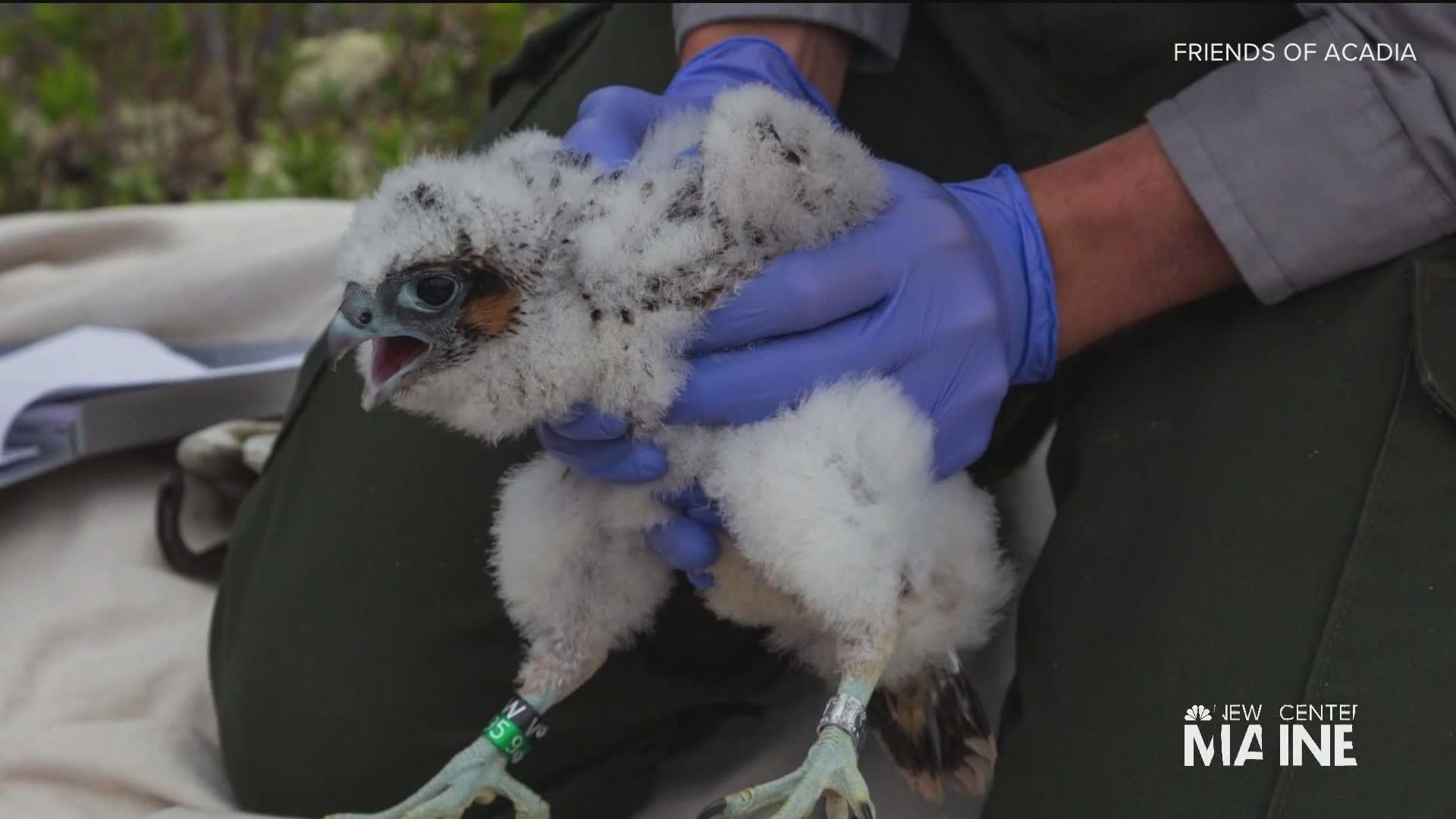MOUNT DESERT, Maine — Several trails at Acadia National Park are closed until further notice and for good reason: It’s nesting season for peregrine falcons.
Falcon parents are preparing to raise their young over the next few months and staff at Acadia are trying to provide them the peace they need to do that. Peace isn't something they have always enjoyed.
The name peregrine means wanderer, a fitting name for a bird that has one of the longest migrations of any in North America.
"Their aerial acrobatics is really something. It's incredible, particularly when they're chasing an intruding raptor or chasing a prey species," said Acadia Wildlife Biologist Bik Wheeler, who has observed peregrines for over a decade.
One of the many reasons peregrines are impressive to watch is the speeds they can reach, speeds of 200 miles per hour. Their speed comes in handy because they only catch their food while in flight.
While their flying is impressive, their nest making is not. That don't bother to make nests. They're called scrapes and they literally scrape a few pebbles from a rocky place and that is where they lay their eggs.
Wheeler says peregrines are extremely territorial and several trails around the Jordan Cliffs in Acadia are closed because the falcons will attack intruders as they protect their young, even hikers if they get too close.
The Jordan Cliffs at Acadia National Park have been perfecting nesting spots for peregrine mating pairs. One spot in particular has drawn several over the years. It's high up, far from mammalian predators like raccoons who would love to steal an egg or chick, and faces east so the birds can soak up the sun as they incubate their eggs.
Peregrines mate for life. With their partner, they will have two to four eggs per year. The mating pairs at Acadia will spend the next several months incubating and then raising their young. Peregrines have been enjoying Acadia since as early as 1936, but along with other raptors including the bald eagle, were almost completely wiped out largely because of DDT. By the mid-1960s, they were no longer breeding in the eastern United States.
Acadia was one of the first sites in the east to help reintroduce peregrines to their natural habitat. In 1985, chicks were raised by hacking, in artificial nest boxes on the side of Jordan Cliffs, and 22 chicks were subsequently raised there.
Pairs have returned to raise their young since 1987. Since then Acadia rangers and biologists band each chick born in Acadia so that they can keep tabs on their whereabouts. Although nationally they are no longer an endangered species, in Maine they are still protected. Acadia National Park currently has three to four mating pairs at a time which is as many as they think they have ever had or could have.
Wheeler says it takes a lot of patience but he encourages onlookers to watch peregrines. He says as long as you are not on the cliffs, you are not bothering them.
"It takes a long time to see those few seconds of action but it's absolutely worth it," he said.

